
2004 Nissan xterra catalytic converter diagram
Artwork: The basic concept of a catalytic converter: sitting between your car's engine and tailpipe, it takes in dirty air and removes a significant amount of pollution from it using chemical catalysts. Sponsored links Contents Why engines make pollution What is a catalytic converter? What happens inside the converter?
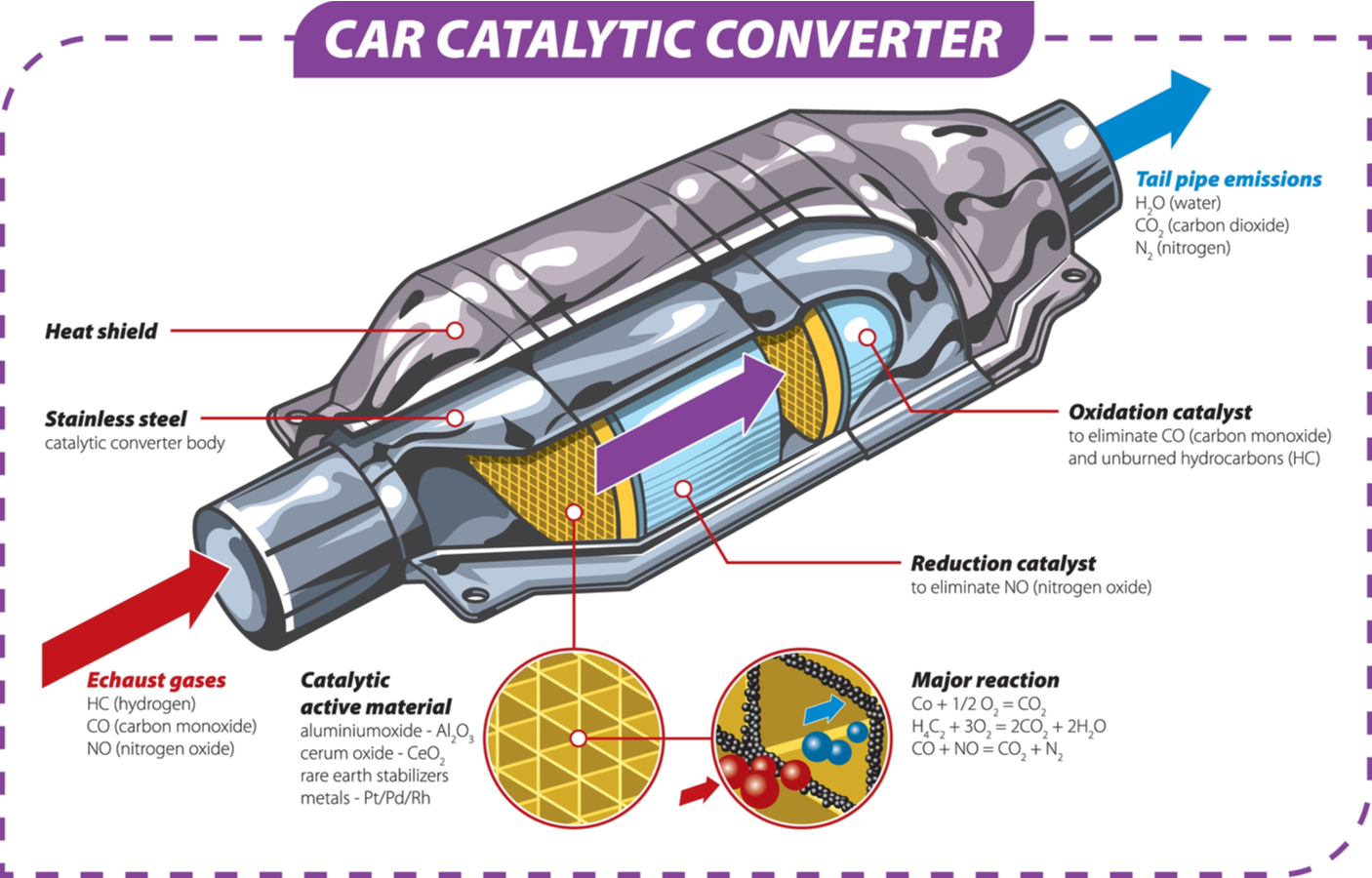
Why is Catalytic Converter Theft on the Rise? DeBroux Automotive
Where is the Catalytic Converter Located? - In The Garage with CarParts.com If you're new to auto repair, you might be wondering where the catalytic converter is located. Find out in this article plus tips on how to access it.

Catalytic Converters Details Mechanism and Diagnoses The Steering Lord
A catalytic converter is a vehicle emissions control device that is used to convert toxic byproducts of combustion (occurring in the exhaust of an internal combustion engine) to less toxic.
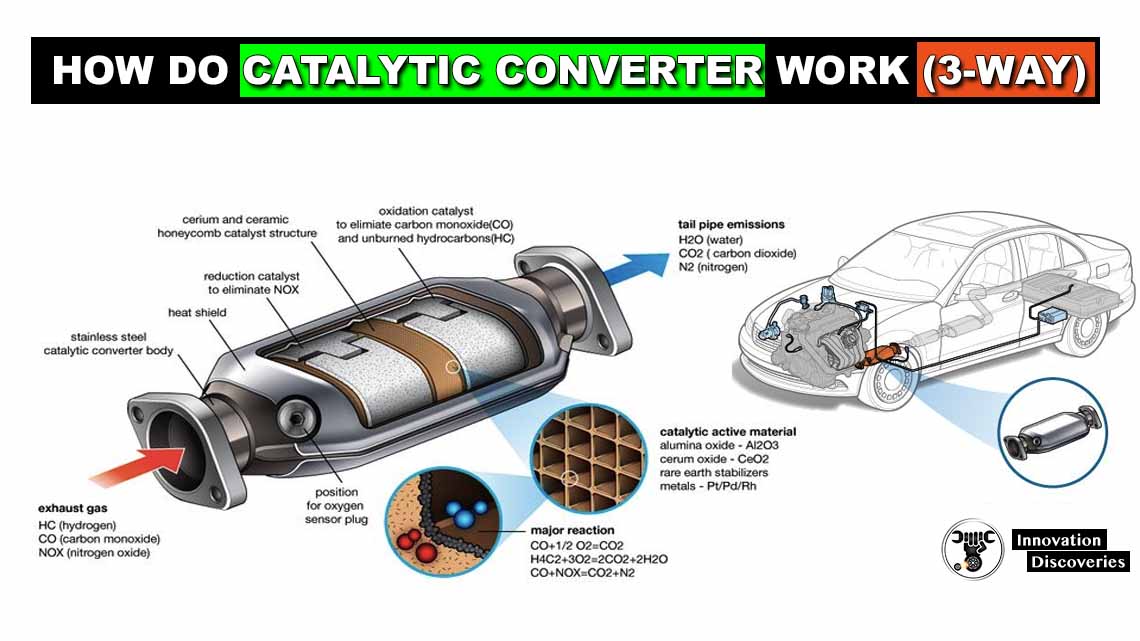
Catalytic Converter (3way)
Here is a diagram of how a catalytic converter works: The catalyst is filled with hot exhaust gas. Exhaust gas interacts with the catalyst after passing through the honeycomb substrate. Chemical reactions that transform the toxic emissions in exhaust gas into less toxic emissions are accelerated by the catalyst.
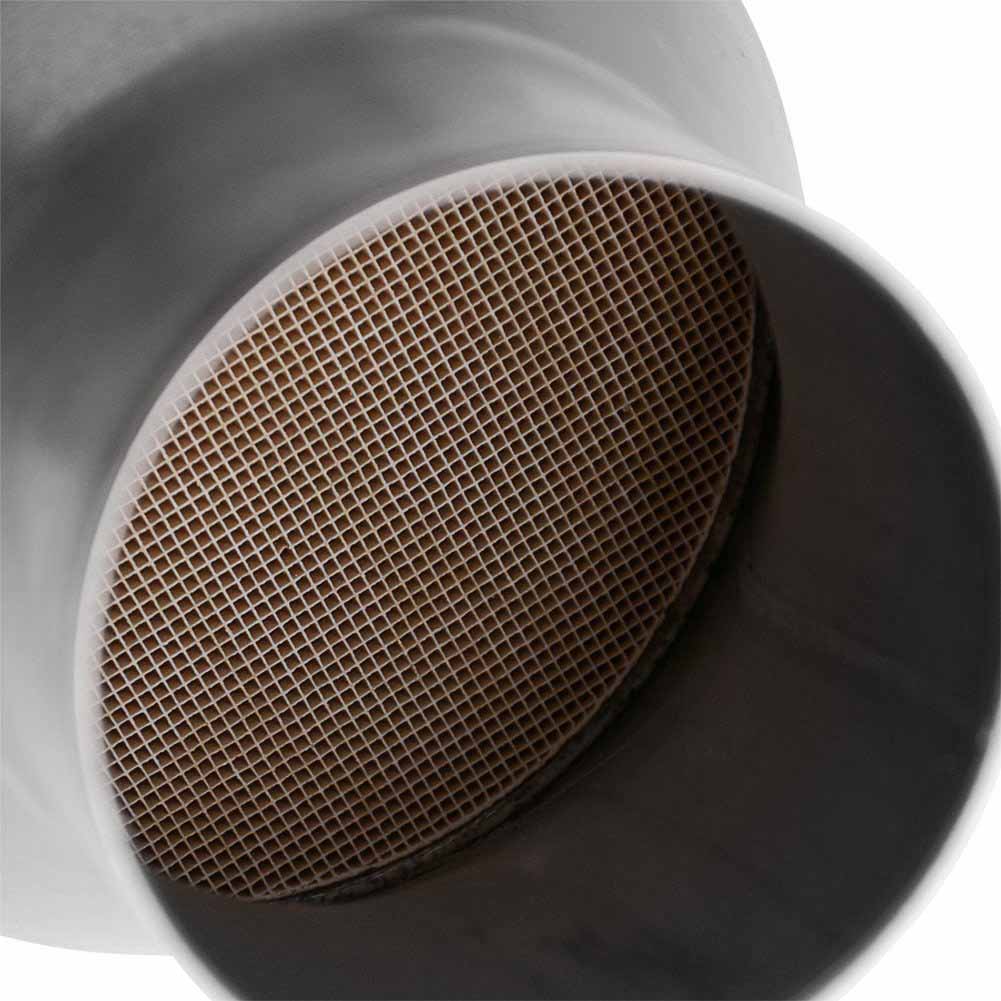
What Is A Catalytic Converter & How Does It Work? CarBikeTech
Catalytic converters are designed to reduce all three: Carbon monoxide (CO) is a poisonous gas that is colorless and odorless. Hydrocarbons or volatile organic compounds (VOCs) are a major component of smog produced mostly from evaporated, unburned .fuel.
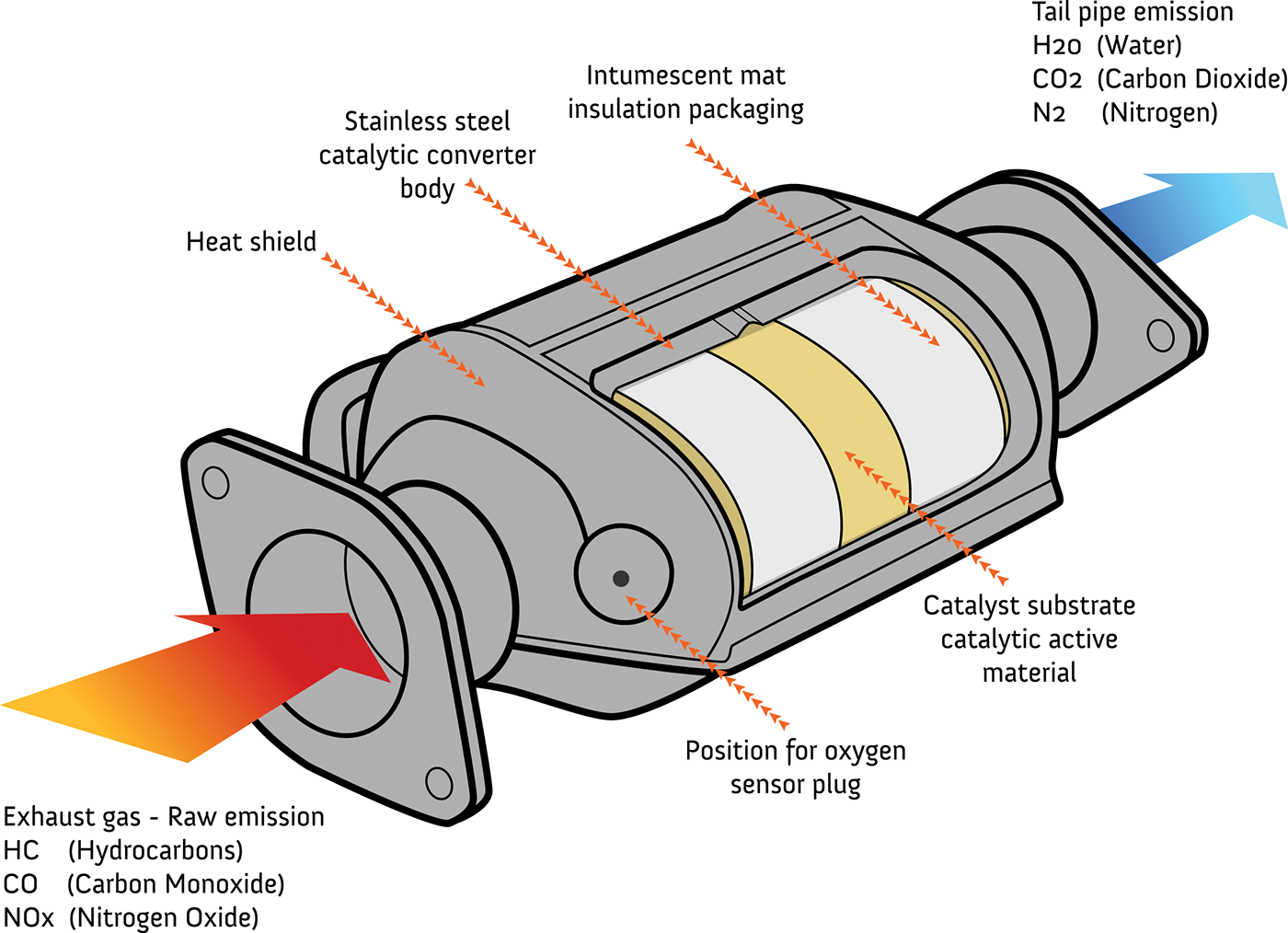
Catalytic Converter Vector Illustration on Behance
Step 1: Raise the vehicle and secure it on jack stands. Make sure to raise the vehicle enough to give space for maneuvering underneath the vehicle. Set the parking brake, and use stoppers or wood blocks under the tires to prevent the vehicle from rolling. Step 2: Find the catalytic converter. Identify the catalytic converter on the underside of.

Catalytic Converter Schematic Diagram Circuit Diagram
Catalytic converters use metallic catalysts to promote the desired reactions at lower temperatures than would otherwise be needed. Typical values are shown in Figure 8.21.The catalyst types could be a base metal (e.g., copper, Cu, or chromium, Cr) but are more usually noble metal (platinum, Pt, palladium, Pd, rhodium, Rh). The transition metal oxides of copper, cobalt, iron chromate, and.
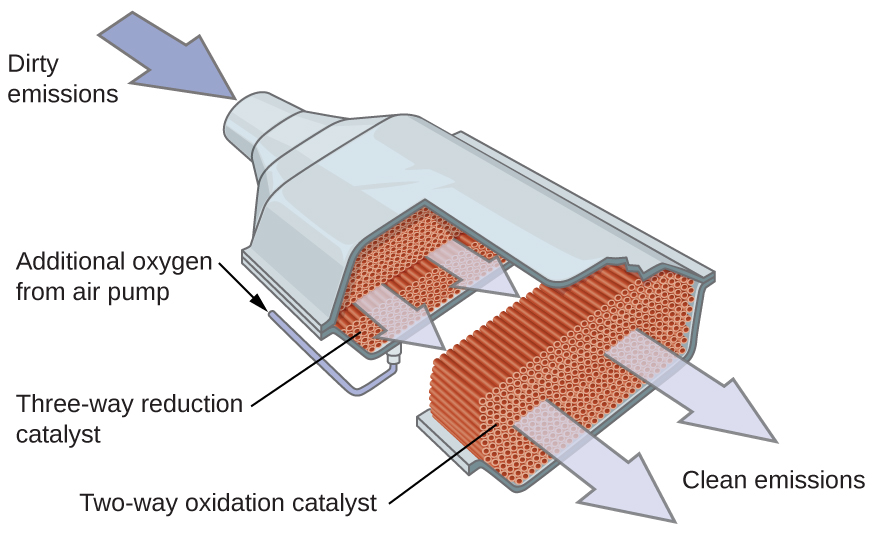
The Function and Purpose of a Catalytic Converter Auto Trends Magazine
The activation energy is the difference between the energy of the starting reagents and the transition state—a maximum on the reaction coordinate diagram. The reagents are at 6 kJ and the transition state is at 20 kJ, so the activation energy can be calculated as follows: Ea = 20kJ − 6kJ = 14kJ (4.6.1) (4.6.1) E a = 20 k J − 6 k J = 14 k J.
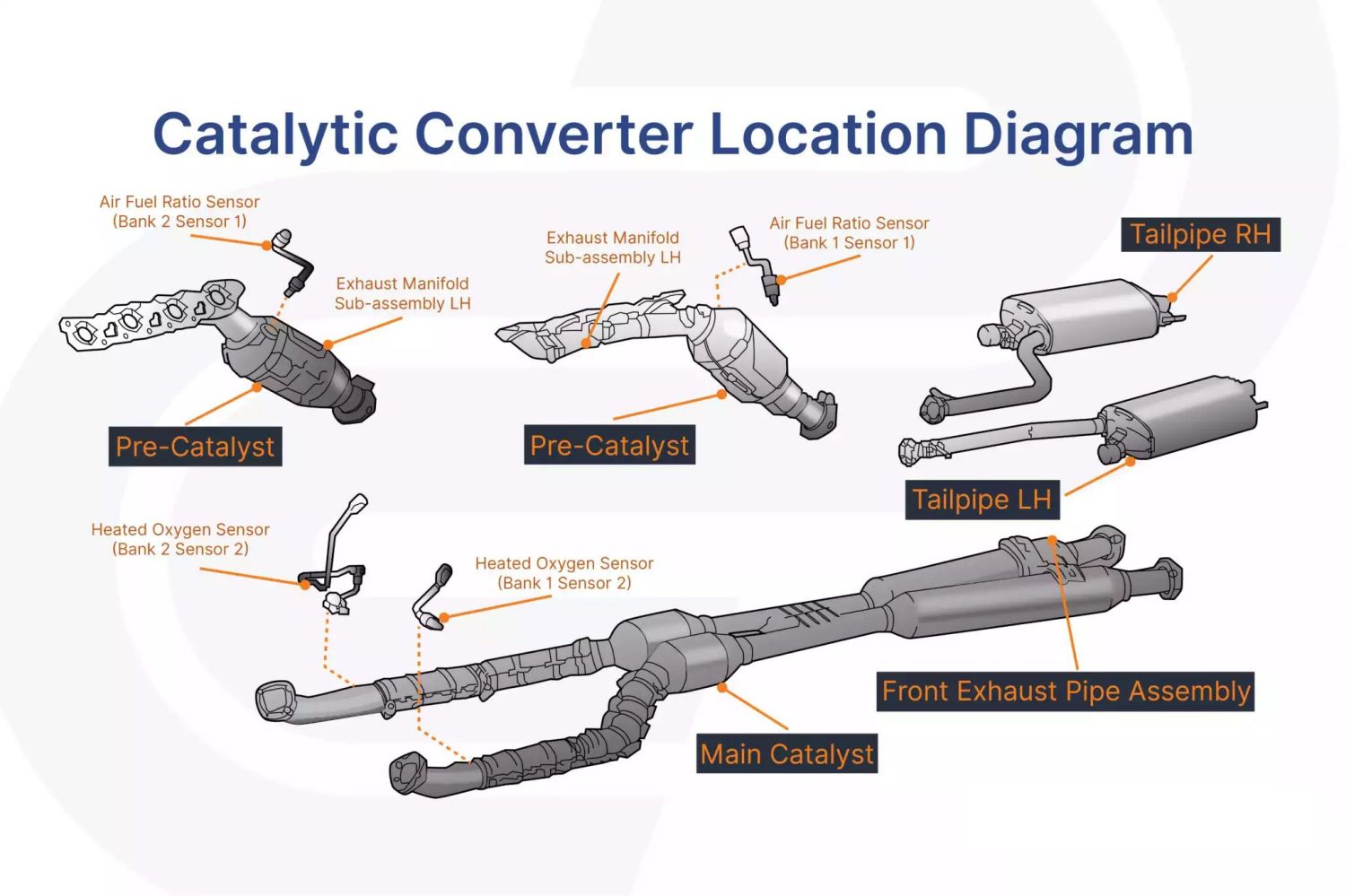
News What effect does the threeway catalytic converter have on the car?
Reaction Diagrams for Catalyzed Reactions The two reaction diagrams here represent the same reaction: one without a catalyst and one with a catalyst. Estimate the activation energy for each process, and identify which one involves a catalyst. Solution
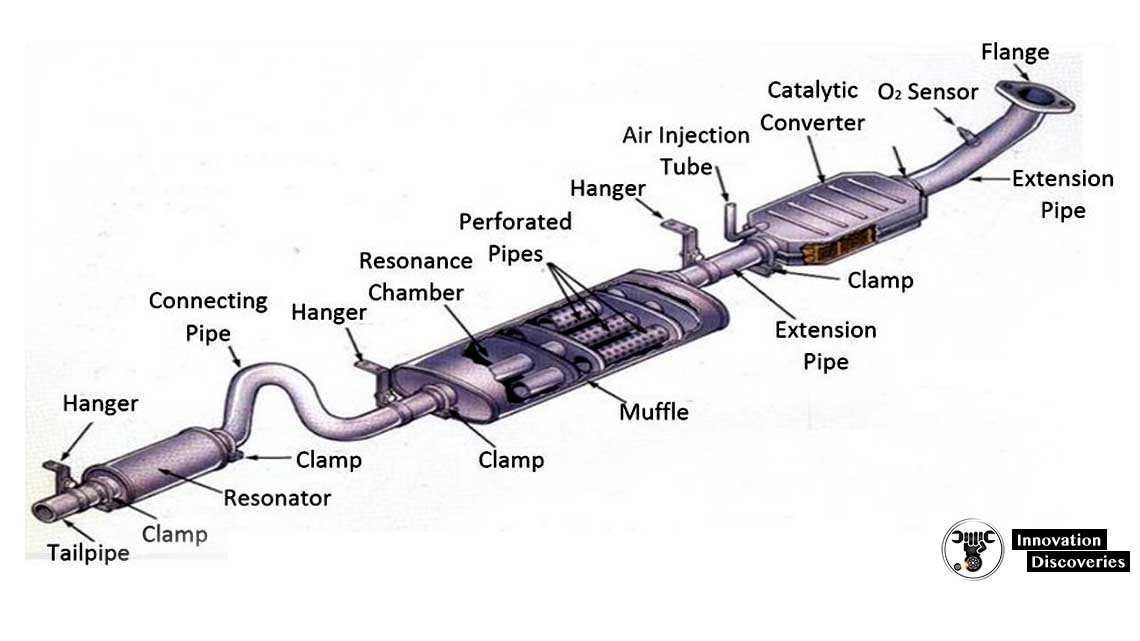
Catalytic Converter
Exhaust System Parts 101: The Basics (Diagram Included) - In The Garage with CarParts.com Learn about your car's exhaust system, so you can talk to your mechanic more confidently if parts need to be repaired in the future. Read on.
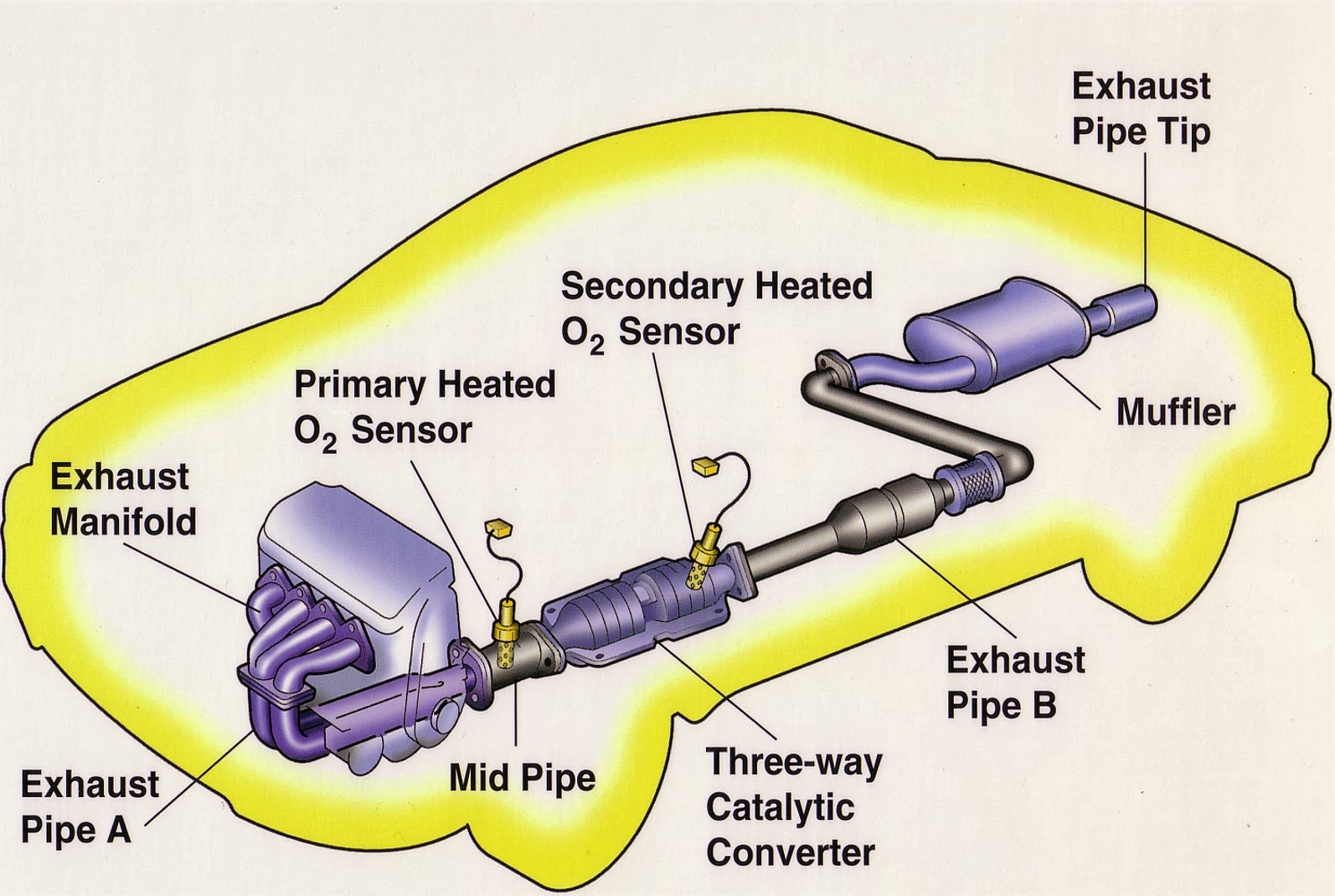
Manigandan Blog Catalytic converter
The catalytic converter is typically a cylindrical-shaped device located in the exhaust system of a vehicle. Its outer shell is made of durable materials such as stainless steel or aluminum. This shell provides protection to the internal components and ensures the converter's longevity. Step 2: Substrate
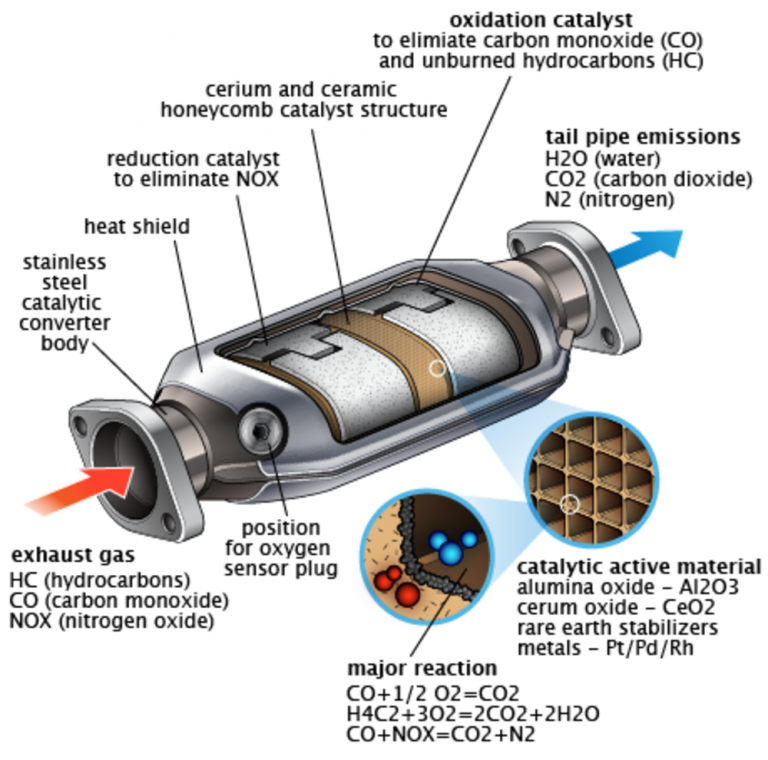
Catalytic converter what is it and how does it work? PakWheels Blog
The main function of a catalytic converter is to decrease pollution emitted from a vehicle's exhaust. The concept behind this is to add a catalyst and force a reaction between the automobile's exhaust and oxygen in the converter. To see just how this happens let's look inside of a catalytic converter. A catalytic converter is made up.

Honda accord catalytic converter diagram
This diagram from MagnaFlow shows the overall construction and reactions for a catalytic converter. When Catalytic Converters Go Bad. Damage to a cat can occur through physical damage, such as smashing the case on a speed bump, or chemical, such as allowing a contaminant to cause "catalyst poisoning", which coats the honeycomb, keeping it from doing it's job.

Catalytic Converter Diagram Photos Cantik
Exhaust pipes, manifold, catalytic converter, and muffler. News Features New Cars Used Cars Shopping Tools. Exhaust System Diagram.
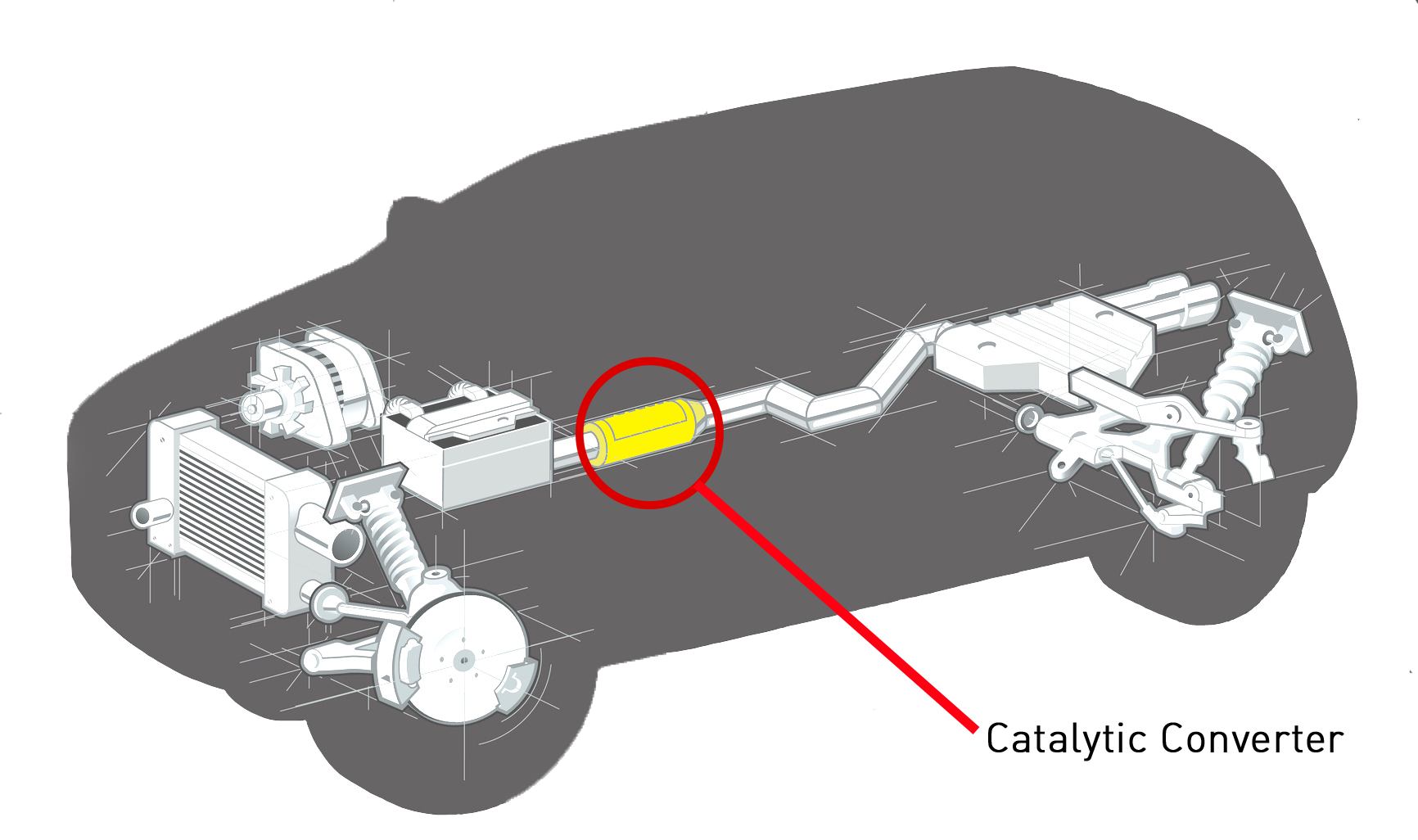
Catalytic converter Learning
A catalytic converter works by facilitating chemical reactions that transform harmful pollutants produced during the combustion of fuel into less harmful substances. It is a key component of a vehicle's exhaust system and plays a critical role in reducing emissions and improving air quality. Here's how a catalytic converter works:

Catalytic Converter Working Principle 2 way and 3 way, Function of catalyst [Animation Video
Catalytic converters take advantage of all five factors that affect the speed of chemical reactions to ensure that exhaust emissions are as safe as possible.. A diagram is shown of two possible interactions of an enzyme and a substrate. In a, which is labeled "Lock-and-key," two diagrams are shown. The first shows a green wedge-like.